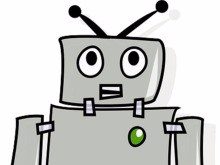Did you ever want to climb Mount Everest?
If you did, you would have to split such a goal into many tasks: You would first need to find out what resources are needed for it, who could help you, how to prepare mentally and physically, etc. You would come up with a list of tasks that, in a sequence, form your plan of achieving the goal.
The same logic applies to all goals we humans have, both in companies and private lives, and it also applies when evaluting what tasks, given a goal, can be outsourced to machine decision making.
The best to way to conduct such an analysis is to view organizational goals as a sequence of inter-related job tasks, and then evaluate which particular sub-tasks humans are best at handling, and vice versa.
- Define the end goal (e.g., launch a marketing campaign)
- Define the steps needed to achieve that goal (strategy) (e.g., decide targeting, write ads, define budget, optimize spend)
- Divide each step into sub-tasks (e.g., decide targeting: analyze past campaigns, analyze needs from social media)
- Evaluate (e.g., on a scale of 1-5) how well machine and human perform in each sub-task (e.g., write ads: human = 5, machine = 1)
- Look at the entire chain and identify points of synergy (where machine can be used to enhance human work or vice versa (e.g., analyze social media by supervised machine learning where crowd workers tag tweets).
We find, by applying such logic, that there are plenty of such tasks in organizational workflows that currently cannot be outsourced to machines, out of variety of reasons. Sometimes the reasons relate to manual processes, i.e. the overall context does not support optimal carrying out of tasks. An example: currently, I’m manually downloading receipts from a digital marketing service account => I have to manually log-in and retrieve the receipts as PDF files, and then send them as email attachment to book-keeping. Ideally, the book-keeping system would just retrieve the receipts via an application programming interface (API) automatically, eliminating this unnecessary part of human labor.
At the same time, we should a) work to remove unnecessary barrier to work automation where it is feasible, b) while thinking of ways to provide optimal synergy from human and machine work inputs. This is not about optimizing individual work tasks, but optimizing the entire workflows toward reaching a specific goal. At the moment, there is little research and attention paid to this kind of comprehensive planning, which I call ”workflow engineering”.
